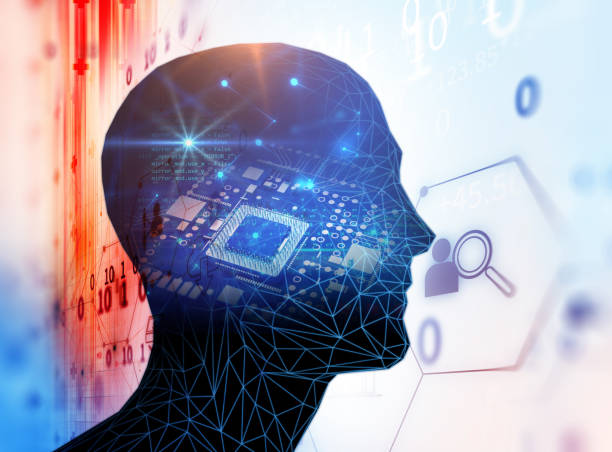What is Artificial Intelligence? Definitions and Basic Concepts
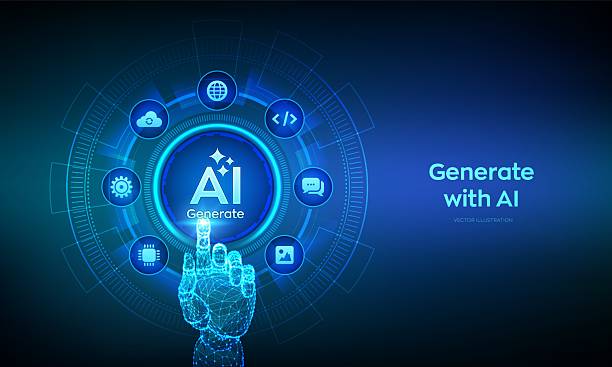
#Artificial_Intelligence (AI) refers to the ability of a computer system to mimic human cognitive functions such as learning, reasoning, problem-solving, and perception.
In other words, artificial intelligence is the effort to build machines that can do things that humans currently do better.
This field includes a wide range of techniques and approaches, including machine learning, neural networks, natural language processing, and robotics.
Artificial intelligence is no longer a science-fiction concept, but is rapidly becoming a reality in our daily lives.
From virtual assistants like Google Assistant and Siri to recommender systems in Netflix and fraud detection algorithms in banks, artificial intelligence is already penetrating many industries and aspects of our lives.
The main goal of artificial intelligence is to create systems that can automatically learn and adapt to environmental changes, make intelligent decisions, and solve complex problems.
This requires the development of algorithms and models that are capable of understanding and processing data, extracting patterns and useful information, and predicting outcomes.
Artificial intelligence is a multidisciplinary field that benefits from computer science, mathematics, statistics, psychology, and cognitive science.
Artificial intelligence can be divided into two main categories: Weak AI (Narrow AI) and Strong AI (General AI).
Weak AI is designed to perform a specific task, such as playing chess or recognizing faces.
While strong AI aims to create systems that can independently perform any intellectual task that a human can perform.
Currently, most existing artificial intelligence systems are of the weak AI type.
Is your current online store design causing you to lose customers and sales?
Rasaweb is your solution with modern and user-friendly online store designs!
✅ Significant increase in conversion rate and sales
✅ Creating strong branding and gaining customer trust
⚡ Get a free consultation on online store design from Rasaweb!
Machine Learning (ML) the Driving Force of Artificial Intelligence
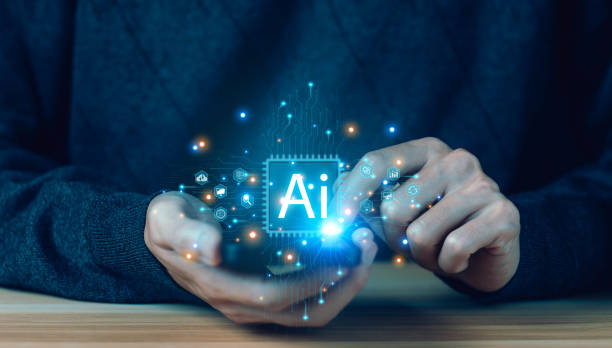
Machine learning (ML) is a subset of artificial intelligence that allows systems to learn from data without being explicitly programmed.
In other words, instead of instructing the computer on how to perform a specific task, it is given data and allowed to discover patterns and relationships in the data and make decisions based on them.
Machine learning can be divided into three main categories: supervised learning, unsupervised learning, and reinforcement learning.
In supervised learning, the system is trained with a set of labeled data.
Labels indicate what output is expected for each input.
For example, an image recognition system can be trained with a set of images of dogs and cats that have been labeled.
The system then learns how to classify new images based on the patterns found in the training data.
In unsupervised learning, the system is trained with a set of unlabeled data.
The goal is for the system to discover hidden patterns and structures in the data.
For example, a customer clustering system can use data about customer purchasing behavior to group them into different categories.
This information can be used for better marketing targeting and improved customer service.
Reinforcement learning is a different approach in which an agent is placed in an interactive environment and learns how to act optimally by performing different actions and receiving rewards or penalties.
This approach is used to train robots and game-playing systems.
For example, a robot can learn how to play a video game or how to perform an industrial task by using reinforcement learning.
Machine learning algorithms are constantly improving, and with the increase in data volume and computational power, their ability to solve complex problems also increases.
Machine learning plays an important role in the advancement of artificial intelligence and allows systems to make smarter and more accurate decisions.
Neural Networks Inspired by the Human Brain

Neural networks (NNs) are computational models inspired by the structure and function of the human brain.
They consist of multiple layers of interconnected nodes called neurons.
Each neuron receives an input signal, processes it, and sends an output signal.
The connections between neurons have weights that are adjusted during the learning process.
Neural networks are used for a wide range of applications, including image recognition, natural language processing, time series prediction, and robot control.
They are particularly effective in solving problems where complex and nonlinear patterns exist in the data.
Deep Neural Networks (DNNs) are a type of neural network that has a large number of layers.
These layers allow networks to extract more complex features from data and perform better in solving problems.
Deep neural networks have made remarkable progress in recent years and have achieved state-of-the-art results in many fields.
For example, deep neural networks have achieved high accuracy in image recognition and can even outperform human performance in some image recognition tasks.
They are also widely used in natural language processing for machine translation, text generation, and question answering.
Neural networks require a lot of computational power, and training them can be time-consuming.
However, with the advancement of hardware technology and the development of more efficient training algorithms, the use of neural networks is expanding, and they are expected to play an important role in the future of artificial intelligence.
| Neural Network Model | Application | Description |
|---|---|---|
| Convolutional Neural Networks (CNNs) | Image recognition, video processing | Specialized architectures for processing networked data such as images and videos. |
| Recurrent Neural Networks (RNNs) | Natural language processing, speech recognition | Suitable for sequential data such as text and audio, with the ability to retain information from previous steps. |
| Generative Adversarial Networks (GANs) | Image generation, data generation | Includes two networks (generator and discriminator) that are trained in a competitive game to generate more realistic data. |
Natural Language Processing (NLP) Understanding and Producing Human Language
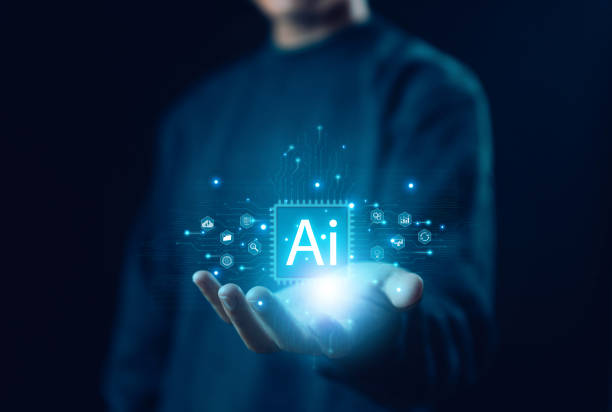
Natural Language Processing (NLP) is a branch of artificial intelligence that deals with the ability of computers to understand, interpret, and generate human language.
The goal of NLP is to create systems that can communicate with humans in natural language, extract information from texts, summarize texts, and generate new texts.
NLP includes a wide range of tasks, including speech recognition, machine translation, sentiment analysis, and question answering.
Each of these tasks has its own specific challenges and requires the use of different techniques and algorithms.
For example, speech recognition involves converting human speech into text.
This task is challenging due to the diversity of accents, speech speed, and environmental noise.
Machine translation involves converting text from one language to another.
This task requires understanding the meaning of the text and conveying it to the target language while maintaining accuracy and fluency.
Sentiment analysis involves identifying the emotions and attitudes present in a text.
This can be used to analyze customer opinions about a product or service.
Question answering involves extracting information related to a question from a text and providing an answer to the question.
This task requires understanding the question and the text, as well as the ability to reason and infer.
NLP has made remarkable progress in recent years and is used in many applications.
Some applications of NLP include virtual assistants, chatbots, machine translation systems, and search engines.
With the increasing volume of textual and audio data, the importance of NLP is also increasing, and it is expected to play an important role in the future of artificial intelligence.
Are you disappointed with the low conversion rate of your online store?
Rasaweb is your definitive solution with professional online store design!
✅ Increase your sales and income
✅ Unparalleled user experience for your customers
⚡ Get a free consultation now!
Robotics Artificial Intelligence in the Physical World
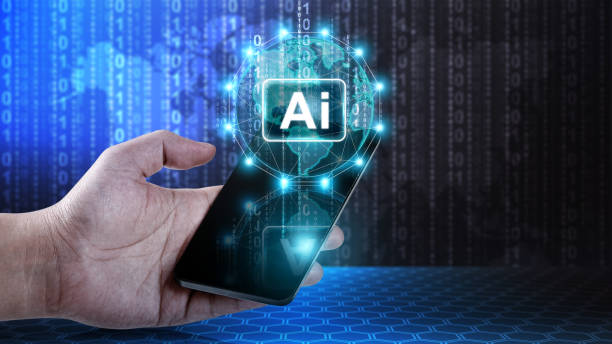
Robotics is a branch of artificial intelligence that deals with the design, construction, operation, and application of robots.
Robots are automated machines that can perform various tasks, including repetitive and dangerous tasks that are not suitable for humans.
Robots use sensors to collect information from their surrounding environment and use artificial intelligence algorithms to process this information and decide how to act.
They also use actuators to move and perform tasks.
Robots are used in a wide range of industries and applications, including manufacturing, logistics, healthcare, and space exploration.
In manufacturing, robots can be used to perform repetitive and precise tasks such as assembling parts and painting cars.
In logistics, robots can be used to transport goods in warehouses and distribution centers.
In healthcare, robots can be used to assist with surgery, rehabilitate patients, and deliver medications.
In space exploration, robots can be used to collect samples, conduct experiments, and repair equipment.
With the advancement of artificial intelligence, robots are becoming smarter and more independent systems.
They can adapt to environmental changes and make more complex decisions by learning from their experiences.
Robots are expected to play an important role in the future of artificial intelligence and have an impact on many aspects of our lives.
Applications of Artificial Intelligence in Various Industries

Artificial intelligence is increasingly being used in various industries and has a significant impact on how these industries operate.
In this section, we will examine some of the applications of artificial intelligence in various industries:
Healthcare Artificial intelligence is used in healthcare to diagnose diseases, develop drugs, personalize treatments, and improve patient care.
For example, machine learning algorithms can be used to analyze medical images such as MRI and CT scans for early detection of cancer.
Artificial intelligence can also be used to identify potential drug candidates and accelerate the drug development process.
Finance Artificial intelligence is used in finance to detect fraud, manage risk, provide financial advice, and automate processes.
For example, artificial intelligence algorithms can be used to identify suspicious patterns in financial transactions and prevent fraud.
Artificial intelligence can also be used to assess credit risk, provide investment recommendations, and automate the loan origination process.
Retail Artificial intelligence is used in retail to personalize the customer shopping experience, improve supply chain management, and automate processes.
For example, recommender systems based on artificial intelligence can suggest relevant products and services to customers.
Artificial intelligence can also be used to forecast demand, optimize inventory, and automate the ordering process.
Transportation Artificial intelligence is used in transportation to develop self-driving cars, optimize routes, and improve safety.
Self-driving cars use sensors and artificial intelligence algorithms to understand their surrounding environment and drive without human intervention.
Artificial intelligence can also be used to optimize routes, reduce traffic congestion, and improve transportation safety.
These are just a few examples of the applications of artificial intelligence in various industries.
With the advancement of artificial intelligence technology, its applications in various industries are expected to expand and have a significant impact on the economy and society.
Challenges and Limitations of Artificial Intelligence
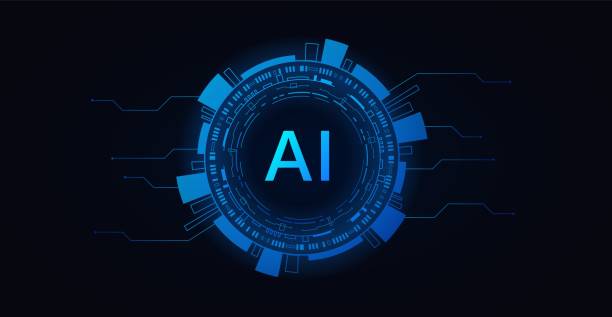
While artificial intelligence has great potential to solve complex problems and improve human lives, it also comes with challenges and limitations.
In this section, we will examine some of these challenges and limitations:
Data Scarcity Many artificial intelligence algorithms, especially machine learning algorithms, require a large amount of data for training.
In some areas, collecting enough data can be challenging or costly.
Also, the available data may be biased, which can lead to poor or unfair performance of artificial intelligence algorithms.
Interpretability Some artificial intelligence algorithms, especially deep neural networks, act like black boxes.
In other words, it is difficult to understand why an artificial intelligence algorithm has made a particular decision.
This can reduce confidence in artificial intelligence algorithms and limit their use in sensitive applications such as healthcare and finance.
Security Artificial intelligence systems can be vulnerable to cyber attacks.
For example, attackers can deceive artificial intelligence algorithms by manipulating training data or exploit security vulnerabilities in artificial intelligence systems to gain unauthorized access to sensitive information.
Ethical Issues The use of artificial intelligence raises important ethical issues.
For example, how can we ensure that artificial intelligence algorithms are fair and not discriminatory? How can we protect the privacy of individuals against the collection and use of their data by artificial intelligence systems? How can we determine responsibility for decisions made by artificial intelligence systems?
Social Impacts The widespread use of artificial intelligence can have significant social impacts.
For example, artificial intelligence can cause job losses and increase economic inequality.
Also, artificial intelligence can be used to monitor individuals and control their behavior.
| Challenge | Description | Solutions |
|---|---|---|
| Data Scarcity | The need for large and high-quality data to train models | Using data generation techniques, transfer learning, and active data collection |
| Interpretability | Lack of understanding of why complex models make decisions | Developing interpretable models, using Explainable AI (XAI) techniques |
| Ethical Issues | Discrimination, privacy, accountability | Developing ethical guidelines, implementing supervisory mechanisms, ensuring transparency |
The Future of Artificial Intelligence Advancements and Prospects
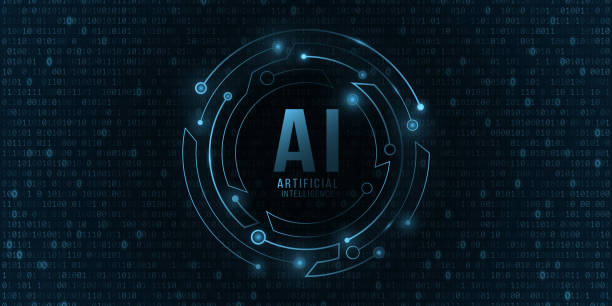
The future of artificial intelligence looks bright and promising.
With the advancement of technology, artificial intelligence is expected to have an impact on many aspects of our lives and help solve complex problems and improve the quality of human life.
Some of the advancements and prospects of artificial intelligence include:
Artificial General Intelligence (AGI) The ultimate goal of artificial intelligence is to create systems that can independently perform any intellectual task that a human can perform.
These systems are known as Artificial General Intelligence (AGI).
While AGI is still a distant goal, researchers are making progress in this area, and we expect to see significant progress in AGI in the coming decades.
Self-Supervised Learning Self-supervised learning is a new approach in machine learning that allows systems to learn from unlabeled data.
This can help reduce the need for labeled data and improve the performance of artificial intelligence algorithms in applications where collecting labeled data is difficult.
Explainable AI (XAI) Explainable AI (XAI) deals with the development of interpretable and reliable artificial intelligence algorithms.
XAI can help increase trust in artificial intelligence systems and use them in sensitive applications.
Edge AI Edge AI deals with running artificial intelligence algorithms on edge devices such as smartphones, cars, and cameras.
This can help reduce latency, increase privacy, and reduce dependence on internet connectivity.
AI and the Internet of Things (AIoT) AI and the Internet of Things (AIoT) deals with integrating artificial intelligence with Internet of Things devices.
This can help create smarter and more automated systems in various applications such as smart homes, smart cities, and smart factories.
Is your online store ready to attract maximum customers and sell more? Rasaweb transforms your online business with modern and efficient online store design.
✅ Increase speed and improve SEO
✅ Excellent user experience on mobile and desktop⚡ Get a free consultation on online store design from Rasaweb!
Key Tips for Learning and Entering the World of Artificial Intelligence

Entering the world of artificial intelligence can be challenging, but with the right approach and continuous effort, you can become a successful artificial intelligence expert.
In this section, we will provide some key tips for learning and entering the world of artificial intelligence:
Strong Mathematical Foundation Artificial intelligence is based on mathematics.
To deeply understand artificial intelligence concepts, you need a strong mathematical foundation in areas such as linear algebra, calculus, statistics, and probability.
Programming Skills To implement artificial intelligence algorithms, you need programming skills.
Popular programming languages like Python and R are widely used in artificial intelligence.
Understanding Machine Learning Concepts Machine learning is one of the most important sub-branches of artificial intelligence.
To enter the world of artificial intelligence, you need to understand basic machine learning concepts such as supervised learning, unsupervised learning, and reinforcement learning.
Practice and Experience The best way to learn artificial intelligence is through practice and experience.
Participate in artificial intelligence projects, participate in artificial intelligence competitions, and code.
The more you practice, the better you learn.
Stay Up-to-Date Artificial intelligence is a rapidly evolving field.
To succeed in this field, you must always seek to learn new things and stay up-to-date with the latest advances.
Networking Connect with other artificial intelligence professionals.
Attend artificial intelligence conferences and events and meet people who work in this field.
Educational Resources for Learning Artificial Intelligence
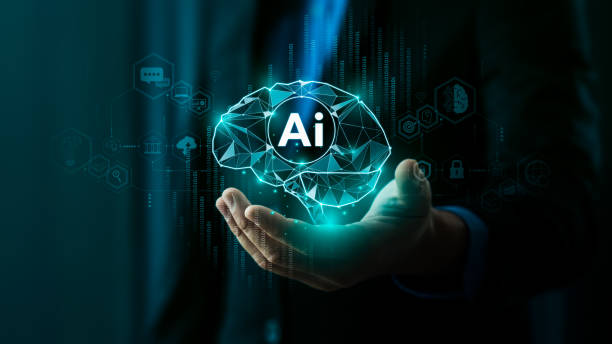
Learning #Artificial_Intelligence requires access to appropriate and quality educational resources.
Fortunately, many resources are available for learning artificial intelligence, including:
Online Courses Online learning platforms such as Coursera, edX, Udacity, and Khan Academy offer high-quality artificial intelligence courses.
These courses are taught by prominent university professors and industry experts and include videos, exercises, and practical projects.
Books There are many books on artificial intelligence that can help you learn the basic and advanced concepts of artificial intelligence.
Some popular artificial intelligence books include “Artificial Intelligence A Modern Approach” by Stuart Russell and Peter Norvig, “Deep Learning” by Ian Goodfellow, Yoshua Bengio, and Aaron Courville, and “Hands-On Machine Learning with Scikit-Learn, Keras & TensorFlow” by Aurélien Géron.
Scientific Articles Scientific articles published in reputable artificial intelligence conferences and journals are a valuable resource for learning about the latest advances and research in this field.
You can search for scientific articles in databases such as Google Scholar, arXiv, and IEEE Xplore.
Online Forums Online forums like Stack Overflow, Reddit, and Quora are good places to ask questions, get help, and share your knowledge with other artificial intelligence enthusiasts.
Open Source Projects Participating in artificial intelligence open-source projects is a great way to learn practically and gain experience.
You can find artificial intelligence open source projects on GitHub and GitLab.
Frequently Asked Questions
| Question | Answer |
|---|---|
| What is artificial intelligence? | It is a simulation of human intelligence in programmed machines to think like humans and imitate their actions. |
| What are the main branches of artificial intelligence? | Includes machine learning, deep learning, natural language processing, computer vision, and robotics. |
| What is Machine Learning? | It is a branch of artificial intelligence that focuses on enabling systems to learn from data and identify patterns without explicit programming. |
| Give examples of artificial intelligence applications in our daily lives. | Voice assistants (such as Siri and Alexa), recommendation systems in Netflix and Amazon, self-driving cars, and facial recognition software. |
| What is Deep Learning? | It is a subset of machine learning that uses multi-layered (deep) artificial neural networks to process large amounts of data. |
| What is Natural Language Processing (NLP)? | It is a branch of artificial intelligence that focuses on enabling computers to understand, interpret, and generate human language. |
| What are some ethical concerns related to artificial intelligence? | Includes bias in data, privacy, job loss, and responsibility in case of errors. |
| What are the main benefits of artificial intelligence? | Increasing efficiency, improving decision-making, automating repetitive tasks, and discovering complex patterns in data. |
| How is artificial intelligence used in the field of healthcare? | In diagnosing diseases, discovering drugs, analyzing medical images, and personal care for patients. |
| How do you see the future of artificial intelligence? | It is expected to continue to develop at a rapid pace, affecting all aspects of human life, from industry to education and entertainment. |
And other services of Rasa Web advertising agency in the field of advertising
Intelligent conversion rate optimization: Transform SEO ranking improvement with the help of dedicated programming.
Intelligent digital branding: An effective tool to increase website visits with the help of real data.
Intelligent SEO: Transform sales growth with the help of real data.
Intelligent customer journey map: Designed for businesses looking to increase click-through rates by managing Google Ads.
Intelligent website development: A dedicated service to increase click-through rates based on marketing automation.
And more than hundreds of other services in the field of internet advertising, advertising consulting and organizational solutions
Internet Advertising | Advertising Strategy | Advertisement Report
Resources
What is artificial intelligence?
, Artificial intelligence applications
, Artificial intelligence and our life
, The future of artificial intelligence
? Are you ready to transform your business in the digital world? Rasaweb Afarin, a leading digital marketing agency, provides innovative and targeted solutions for your growth and success by offering comprehensive services including dedicated website design, SEO, and content marketing. With us, have a powerful and influential presence in the online space and achieve your business goals.
📍 Tehran, Mirdamad Street, next to the Central Bank, Southern Kazerun Alley, Ramin Alley No. 6



